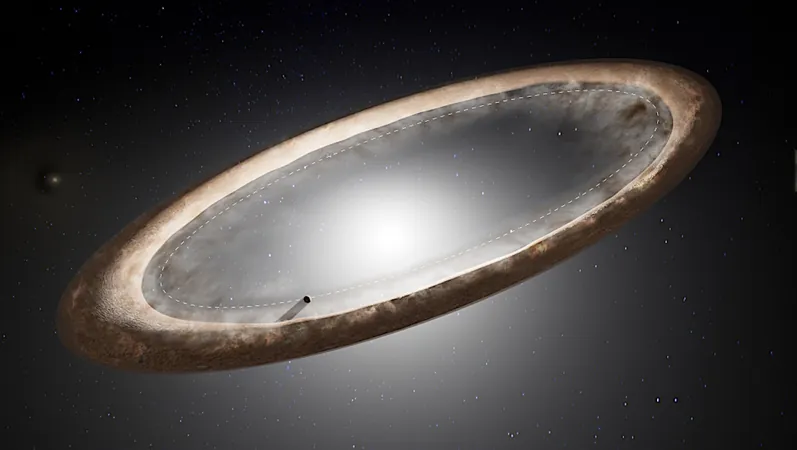
Unlocking Cosmic Mysteries: Fomalhaut's Warped Ring Revealed by Evolving Planets
2025-09-05
Author: Rajesh
Astronomers Capture Stunning New Images of Fomalhaut's Disk
In a groundbreaking discovery, astronomers utilizing the Atacama Large Millimeter/submillimeter Array (ALMA) have unveiled the highest resolution images ever of Fomalhaut's debris disk. This ring, encircling one of the brightest stars in our night sky, continues to baffle scientists, prompting a fresh wave of research and speculation.
The Eccentricity Enigma Explained
Fomalhaut’s disk is not merely irregular—it exhibits an unprecedented variation in eccentricity, which refers to how stretched or off-center the ring appears from the star. Previously, scientists assumed this eccentricity to be fixed, but new data shows a fascinating gradient: the disk's eccentricity decreases the farther you move away from Fomalhaut. Imagine a cosmic Saturn's rings, but with an intriguing offset!
A New Perspective on Planetary Influence
Lead author Joshua Bennett Lovell from the Harvard-Smithsonian Center for Astrophysics stated, "Our observations reveal that the eccentricity isn’t static; it diminishes with distance, a phenomenon never conclusively observed in any debris disk before." This exciting finding hints at unseen planets possibly sculpting the debris disk's shape as they orbit Fomalhaut.
What Lies Beneath: The Search for Hidden Planets
This novel model suggests that a massive planet, still lurking undetected within Fomalhaut's disk, could have played a critical role in shaping its unique structure over millions of years. Researchers theorize that this celestial body influenced the disk during its formative phase, suggesting the peculiar shape has endured for over 400 million years.
Precision Measurements Challenge Old Models
In a follow-up study, led by graduate student Jay Chittidi at Johns Hopkins University, the team explored the significant brightness shifts within the debris disk, which could not be explained by outdated models assuming a fixed eccentricity. Chittidi remarked, "We are now able to interpret this disk more accurately, reconstructing the dynamic history and current state of this cosmic system."
Future Discoveries Await
Excitingly, the team plans further ALMA observations to refine their models and hopefully uncover that elusive planet. Lovell expressed optimism for future findings, stating, "New clues will help us uncover the hidden world orbiting Fomalhaut!" The researchers have also made their eccentricity model code available, inviting other astronomers to apply it to discover more about distant systems.


 Brasil (PT)
Brasil (PT)
 Canada (EN)
Canada (EN)
 Chile (ES)
Chile (ES)
 Česko (CS)
Česko (CS)
 대한민국 (KO)
대한민국 (KO)
 España (ES)
España (ES)
 France (FR)
France (FR)
 Hong Kong (EN)
Hong Kong (EN)
 Italia (IT)
Italia (IT)
 日本 (JA)
日本 (JA)
 Magyarország (HU)
Magyarország (HU)
 Norge (NO)
Norge (NO)
 Polska (PL)
Polska (PL)
 Schweiz (DE)
Schweiz (DE)
 Singapore (EN)
Singapore (EN)
 Sverige (SV)
Sverige (SV)
 Suomi (FI)
Suomi (FI)
 Türkiye (TR)
Türkiye (TR)
 الإمارات العربية المتحدة (AR)
الإمارات العربية المتحدة (AR)